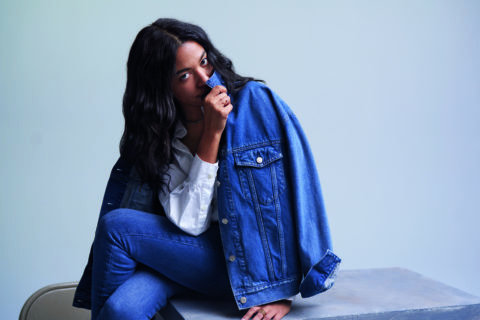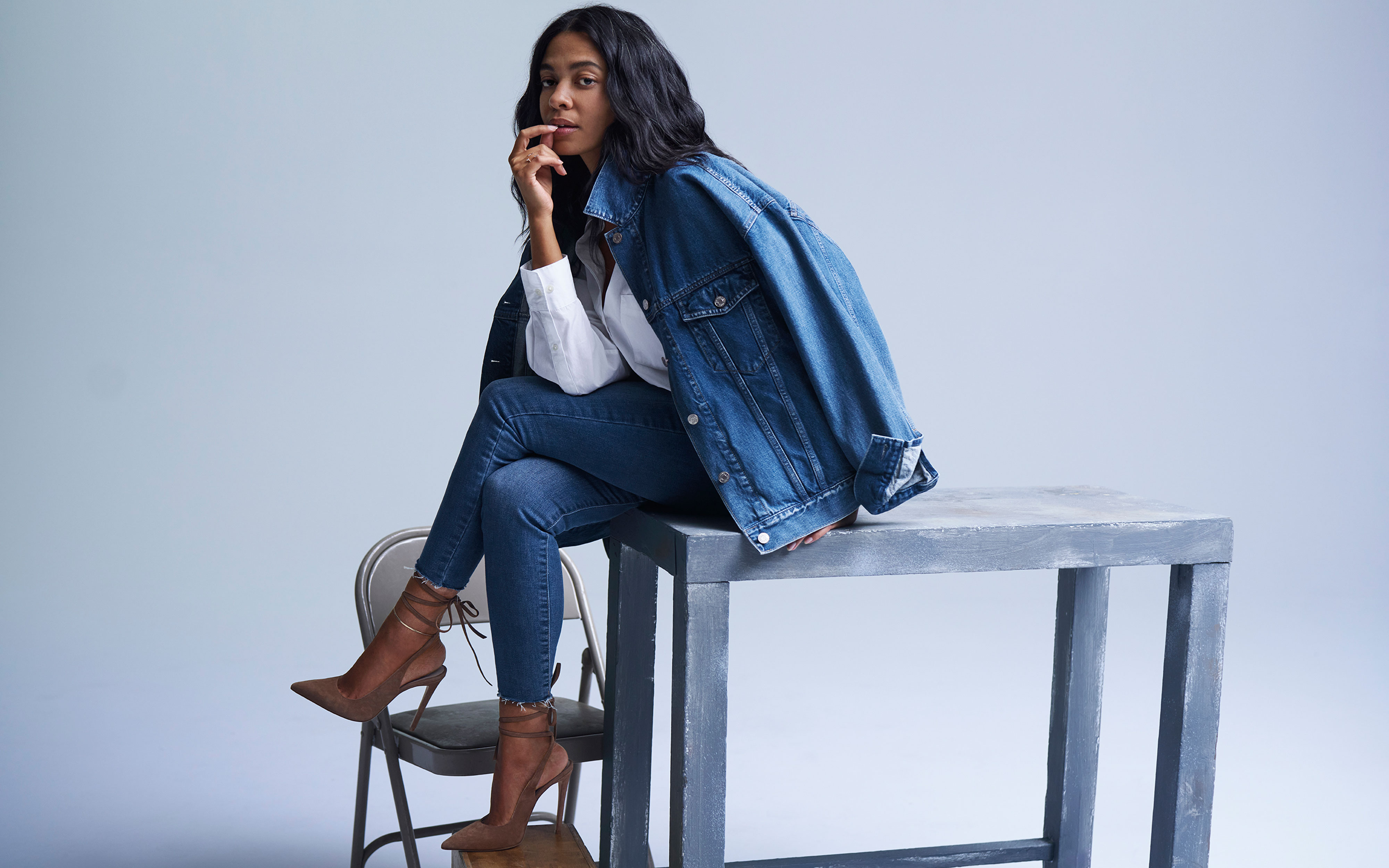We spoke to the founder of the organization that urges brands to commit 15 percent of their shelf-space to Black-owned businesses about appearing in Gap’s inclusion-minded spring campaign, how consumers can shop more mindfully, and what she hopes for the future of the Pledge.
It’s been nearly a year since Aurora James, the Canadian-born creative director and founder of Brother Vellies and activist added another significant title to her resume — founder of the 15 Percent Pledge. Started in May 2020 “in direct response to the murders of George Floyd and Breonna Taylor” at the hands of law enforcement, James tells FASHION, the Pledge calls on major retailers to commit at least 15 percent of their shelf space to Black-owned businesses. In the intervening months, brands like Sephora, Gap Inc. and Moda Operandi, not to mention Canadian mega-brand Indigo, have all taken the Pledge.
After working with Gap on their commitment to the Pledge, the New York-based multi-hyphenate appeared in the brand’s new Spring 2021 “Generation Good” campaign, described in a press release from the iconic American brand as “a collective of unique individuals taking action as forces for good.” James models alongside folks including anti-bullying activist Nandi Hildebrand, skateboarder Evan Mock and Ina Bhoopalam, a gender equality and climate justice activist. “Acting on the shared values of inclusion, diversity, sustainability and community, these groundbreakers are changing the paradigm, propelling a real shift in how we show up, represent, listen and learn across generations,” the release continues. “Through founding ideals and creative expression, Generation Good inspires the good in all of us, working together for a brighter future.”
We spoke to James about working with Gap on the 15 Percent Pledge as well as the spring campaign, how consumers can be more mindful about how they shop, and what she hopes for the future of the Pledge — and diversity, equity and inclusion in general.
Can you tell me about your journey with the 15 Percent Pledge — how does it feel nearly a year later?
When I started the Pledge last May, it was in direct response to the murders of George Floyd and Breonna Taylor. For the first time, it seemed like people were finally beginning to pay attention to how systemic racism impacts every aspect of this country. We saw corporations issuing countless statements of support with Black Lives Matter, and this was an opportunity to bring companies to the table and offer them viable solutions to invest in Black businesses tailored to their specific needs. In just one year, we now have 21 companies that have partnered with us to address the racial inequities that exist across industries — from retail, to magazines, to websites and even model management companies. While there have been challenges, the Pledge has created $4 billion dollars in value of pipeline opportunities for Black owned businesses across the country, and our momentum is only continuing to grow.
What has it been like working with Gap on the Generation Good campaign *and* solidifying their commitment to the pledge?
As the nation’s largest speciality apparel company, we were thrilled to partner with Gap Inc. to drive equity across retail. Of course, I was excited to work with them on Generation Good, but having them also take the Pledge and commit to increasing their pipeline programs by 15 percent created this alignment and synergy that was unique, and really speaks to how every partnership is different.
Tell me about the Gap spring campaign and how it speaks to inclusion and sustainability.
Participating in Generation Good was an incredible experience. The campaign touches on issues that I care deeply about — representation, inclusivity, equity and sustainability. These are values that the Pledge and Brother Vellies are rooted in, and it was exciting to see this alignment. In addition to being a Pledge partner, Generation Good further demonstrates Gap Inc.’s commitment to diversity and community.

What about shooting the campaign itself — how did it feel to do a creative, more normal “before pandemic” thing like a photo shoot while we’re still grappling with COVID?
As a fashion entrepreneur and creative, it was great to shoot the campaign with Gap Inc. It was a refreshing experience, and even while socially distanced and practicing COVID safety precautions, it was nice to have a creative outlet.
How do you think fashion brands should be approaching inclusion and representation in the current moment?
At the Pledge, we work collaboratively with our partners to find solutions that best fit their needs. Approaching Diversity, equity and inclusion (DEI) efforts at a large retailer like Macy’s is going to look different than it will at smaller retailers or our other partners, which is why we say that taking the Pledge is not ‘one size fits all.’ Companies need to understand that a band-aid solution is not enough — we need them to dig deep and completely re-evaluate their business models. Inclusion and representation are the floor, not the ceiling, and so much work needs to happen internally for these corporations to address the years of systemic racism that has existed across these industries. At the Pledge, we work in tandem with our partners to ensure that they are not only working to best support the Black vendors they invest in, but are also deepening their DEI initiatives within their companies.
What advice do you have for consumers who want to shop more mindfully?
We encourage them to take our Consumer Commitment. Found on our website, the Consumer Commitment asks individuals to take stock of their monthly spending and reallocate 15 percent of their purchases to Black-owned businesses. Dismantling racial inequities requires more than one-time donations — we need everyone to stay involved even when #BlackLivesMatter is no longer trending on Twitter.
What do you hope to see regarding the 15 Percent Pledge in its second year?
As we head into our second year, we’re excited to dive deep into data collection to fully understand the monetary impact each partnership has had on Black businesses. Of course we hope to expand our list of Pledge takers and continue disrupting business as usual across these industries [as well].
Are there any Canadian partners you’re excited about working with, or are hoping will make the pledge?
Later last year, Indigo became the first Canadian retailer to take the Pledge. As a native Canadian, it was exciting to partner with Canada’s largest bookstore because it cannot be overstated how crucial it is for Black children to read books written by Black authors and to see themselves reflected in those stories. We are looking forward to building on this momentum and expanding our partnerships in Canada, hopefully in the coming months.
